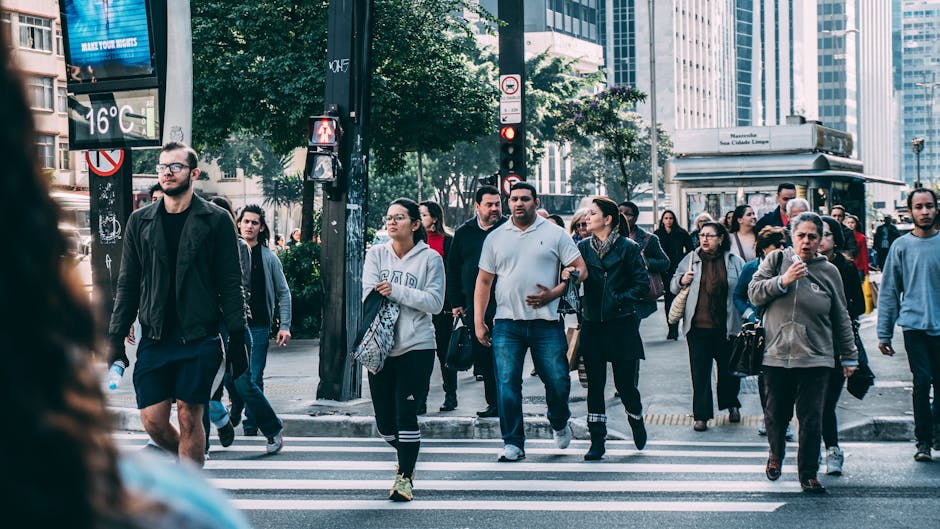Understanding Intersectionality in Society: An In-Depth Exploration
Have you ever felt like you’re not just one identity, but a complex blend of various aspects that shape who you are? This is where the concept of intersectionality comes into play. Intersectionality is a lens through which we can view and understand the interconnected nature of social categorizations such as race, gender, class, sexuality, and more. It highlights how these different aspects of identity intersect and overlap, influencing individuals’ experiences in society. In this comprehensive article, we will delve into the depths of intersectionality in society, exploring its origins, implications, and significance in today’s world.
The Origins of Intersectionality

Intersectionality as a concept was coined by Kimberl Crenshaw, a prominent scholar and civil rights advocate, in the late 1980s. Crenshaw introduced the term to address the limitations of feminist and civil rights movements that primarily focused on single-axis identities. She argued that individuals experience multiple forms of oppression simultaneously, and these intersecting identities create unique experiences that cannot be understood by looking at each identity in isolation.
Intersecting Identities: A Closer Look

At the core of intersectionality is the recognition that individuals are not defined by a single identity but by a complex interplay of various factors. For example, a Black woman may face discrimination not only based on her gender but also due to her race. This double marginalization leads to unique challenges that cannot be fully understood by examining gender or race independently.
Moreover, intersectionality extends beyond race and gender to encompass a wide range of social categorizations, including sexual orientation, disability, socio-economic status, and more. Each of these intersecting identities contributes to an individual’s social location and shapes their experiences in society.
Intersectionality in Practice

Intersectionality has profound implications for various aspects of society, from policy-making to social justice movements. By applying an intersectional lens, we can better understand and address systemic inequalities that impact marginalized communities. For instance, in healthcare, an intersectional approach recognizes that individuals from different backgrounds may face unique barriers to access and quality of care due to their intersecting identities.
Challenges and Controversies

While intersectionality has gained significant traction in academic and activist circles, it is not without its critiques. Some argue that the concept is too complex and difficult to operationalize, leading to challenges in implementing intersectional approaches in practice. Additionally, there are debates about the hierarchy of oppressions and how different intersecting identities interact with each other.
Despite these challenges, intersectionality remains a powerful tool for understanding social inequalities and advocating for inclusive policies that address the diverse needs of all individuals.
Intersectionality and Social Movements
Intersectionality has played a crucial role in shaping contemporary social movements, from Black Lives Matter to LGBTQ+ rights advocacy. These movements have adopted an intersectional framework to highlight the interconnected nature of various forms of oppression and to center the voices of those most marginalized within their communities.
Expert Opinions: Perspectives on Intersectionality
According to Dr. Angela Davis, a prominent activist and scholar, “Intersectionality allows us to see the complexities of individual experiences while also recognizing the broader structures of power that shape those experiences.” Experts across various fields emphasize the importance of intersectionality in creating more inclusive and equitable societies.
Common Misconceptions About Intersectionality
One common misconception about intersectionality is that it is solely focused on individual experiences rather than systemic structures of power. In reality, intersectionality seeks to illuminate how societal inequalities are perpetuated through intersecting identities and social structures.
Conclusion: Embracing Intersectionality for a More Just Society
As we navigate the complexities of our increasingly diverse world, intersectionality serves as a powerful tool for understanding and addressing the interconnected nature of social inequalities. By recognizing the unique experiences of individuals with intersecting identities, we can strive towards a more just and inclusive society for all.
Next time you consider someone’s story, remember that it is not defined by one single aspect of their identity, but by the intricate web of intersecting factors that shape who they are. Embracing intersectionality means acknowledging the richness and complexity of human experiences, and working towards a world where everyone is seen, heard, and valued.




